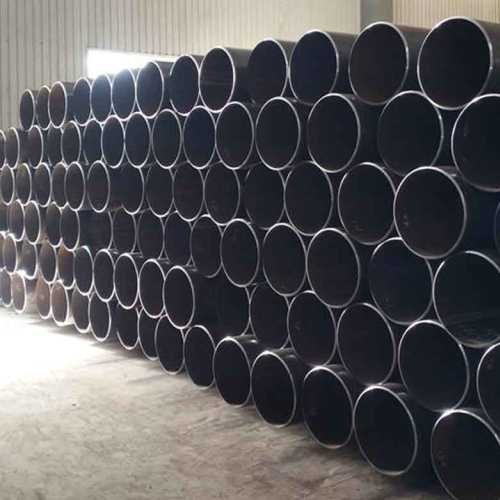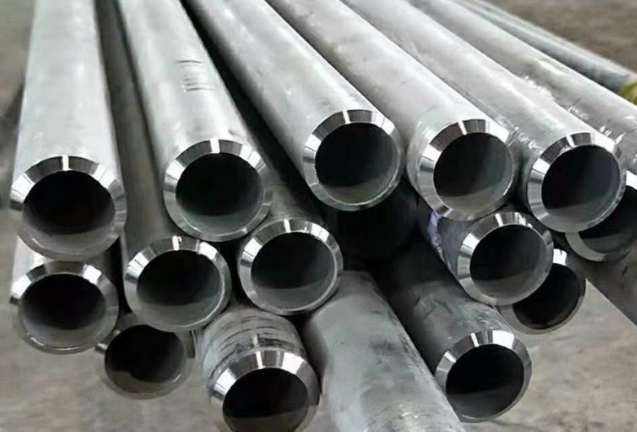
The manufacturing of seamless pipes begins with a solid cylindrical steel billet. This billet is heated at a high temperature and then stretched and pulled over a form until it forms a hollow tube. Methods like rotary piercing and rolling are employed to achieve the desired shape and size without any seams. This process ensures a high level of strength and integrity, making seamless pipes ideal for high-pressure applications.
Welded pipes are produced by coiling a flat strip of steel (skelp) and welding it longitudinally to form a tube. The manufacturing processes include Electric Resistance Welding (ERW) and Submerged Arc Welding (SAW), among others. ERW pipes are made by applying high-frequency electrical currents to the edges of the rolled plates, welding them together. SAW pipes, on the other hand, are produced by forming and welding the seam under a blanket of flux to protect the weld pool and enhance the weld's quality.
The fundamental difference in manufacturing seamless and welded pipes imparts unique characteristics to each. Seamless pipes, being made from a single piece of metal, boast superior strength and are often chosen for high-pressure, high-temperature environments. On the other hand, welded pipes, due to their method of construction, are available in longer lengths and a wider range of diameters, making them suitable for applications where these attributes are prioritized over pressure handling capabilities.
Seamless pipes, known for their uniformity and integrity, excel in environments where pressure, temperature, and mechanical strength are critical. The lack of a weld seam ensures there are no weak points, allowing seamless pipes to withstand higher pressures and temperatures than their welded counterparts. This makes them an indispensable choice for high-stress applications such as hydraulic cylinders, boilers, and high-pressure gas lines. Their ability to maintain strength under thermal stress also renders them ideal for chemical processing and power generation industries.
Welded Pipes: Versatility and Suitability
Welded pipes, while they may not match the pressure handling capabilities of seamless pipes, offer a versatility that makes them suitable for a wide array of applications. Thanks to their manufacturing process, they can be produced in longer lengths and larger diameters, making them the go-to option for large-scale infrastructure projects like oil and gas pipeline construction, water supply networks, and sewage systems. The improved technology and quality control in welding techniques, such as ERW and SAW, have significantly enhanced their strength and reliability, making them fit for moderate pressure applications at a more economical cost.
Comparison: Tailoring to Application Needs
The choice between seamless and welded pipes ultimately hinges on the specific requirements of the application. For projects demanding high pressure and temperature resistance, seamless pipes offer unmatched performance. Conversely, when length, diameter, and cost-efficiency are paramount, welded pipes provide a practical solution. It's essential to consider the environment in which the pipe will be used—corrosive, high temperature, high pressure—to make the most informed decision. For instance, the water industry often favors welded pipes for their larger diameters and cost-effectiveness, while the oil and gas industry may opt for seamless pipes for their superior strength and resilience.
Limitations:
Advantages:
Limitations:
The decision between seamless and welded pipes is not solely a matter of performance and application suitability; cost implications play a significant role. Both initial acquisition costs and long-term operational costs must be considered to determine the most cost-effective choice for a project. This section explores these financial considerations, aiming to provide a clearer understanding of how each type of pipe can impact the overall budget of an industrial project.
The cost of pipes can be influenced by several factors, including the material from which they are made, the manufacturing process, the size and length of the pipes, and the specific requirements of the application, such as pressure ratings and temperature tolerance. Additionally, the cost of transporting and installing these pipes can vary significantly between seamless and welded options, further affecting the total project cost.
Seamless Pipes: The manufacturing process for seamless pipes is inherently more complex and labor-intensive, requiring high-quality materials and precise control to ensure uniformity and strength. These factors contribute to the higher initial cost of seamless pipes compared to their welded counterparts.
Welded Pipes: Welded pipes, benefiting from a simpler manufacturing process and the ability to use lower-cost materials, generally come with a lower initial price tag. This makes them an attractive option for projects where cost constraints are a primary concern.
Seamless Pipes: Although the upfront cost of seamless pipes is higher, their superior strength and durability can lead to lower maintenance costs over the pipe's lifespan. Seamless pipes are less likely to suffer from failures at high pressures or under extreme temperatures, potentially reducing the need for repairs and replacements.
Welded Pipes: While welded pipes may be less expensive initially, their susceptibility to corrosion and failure at the weld seam can result in higher long-term maintenance costs, especially in applications involving corrosive substances or high-pressure conditions. However, advancements in welding technology and anti-corrosion treatments have helped to mitigate these issues, improving the lifespan of welded pipes.
The selection between seamless and welded pipes should consider both immediate financial outlays and anticipated operational expenses. For projects requiring high performance under demanding conditions, the long-term reliability of seamless pipes may justify their higher upfront cost. Conversely, for applications with lower pressure requirements or where large diameters and lengths are needed, welded pipes offer a cost-effective solution without significantly compromising on quality or longevity.
Projects with tight budgets may favor welded pipes for their lower initial cost, especially if the application does not demand the high pressure and temperature resistance that seamless pipes offer. On the other hand, for critical applications where failure is not an option, the investment in seamless pipes can be a more economical choice over the project's life, considering the potential costs associated with downtime and repairs.
Selecting between seamless and welded pipes involves a nuanced understanding of the project's requirements, balancing factors such as application-specific needs, cost considerations, and long-term performance expectations. This section outlines the key criteria to consider when making this decision, ensuring that the choice aligns with the project's overall objectives and constraints.
Determining Factors
Application Requirements: The nature of the fluid being transported (e.g., gas, oil, water), the environment (corrosive, high temperature, high pressure), and the physical demands of the application (such as the need for large diameters or long lengths) are primary considerations. Seamless pipes are often favored for applications requiring high strength and resistance to pressure and temperature, while welded pipes are selected for their versatility in sizes and cost-effectiveness in less demanding conditions.
Pressure and Temperature Considerations: High-pressure and high-temperature applications typically necessitate the use of seamless pipes due to their superior strength and durability. Welded pipes, although improving in quality, may not always provide the same level of reliability under such extreme conditions.
Budget and Cost-Efficiency: The decision between seamless and welded pipes can significantly impact the project's budget. While seamless pipes offer longevity and durability, their higher initial cost may not be justifiable for every project. Welded pipes, offering a more economical upfront cost, may be suitable for applications where the conditions do not severely test the pipe's limits.
Availability and Lead Time: The availability of specific types of pipes and the lead time for their delivery can influence the selection process. In some cases, the immediate availability of welded pipes can be a decisive factor, especially in projects with tight timelines.
For industry professionals navigating the decision between seamless and welded pipes, consider the following recommendations:
The choice between seamless and welded pipes is complex, requiring careful consideration of application requirements, performance expectations, and budget constraints. By understanding the unique advantages and limitations of each pipe type, industry professionals can make informed decisions that optimize the performance, reliability, and cost-effectiveness of their projects. Whether the project demands the high strength and durability of seamless pipes or the versatility and economic benefits of welded pipes, a thoughtful selection process will ensure that the chosen pipe type meets the specific needs of the application, contributing to the overall success of the project.
